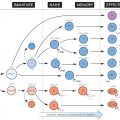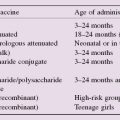Of the four major causes of death – injury, infection, degenerative disease and cancer – only the first two regularly kill their victims before child-bearing age, which means that they are a potential source of lost genes. Therefore any mechanism that reduces their effects has tremendous survival value, and we see this in the processes of, respectively, healing and immunity.
Immunity is concerned with the recognition and disposal of foreign or ‘non-self’ material that enters the body (represented by red arrows in the figure), usually in the form of life-threatening infectious microorganisms but sometimes, unfortunately, in the shape of a life-saving kidney graft. Resistance to infection may be ‘innate’ (i.e. inborn and unchanging) or ‘acquired’ as the result of an adaptive immune response (centre).
Immunology is the study of the organs, cells and molecules responsible for this recognition and disposal (the ‘immune system’), of how they respond and interact, of the consequences – desirable (top) or otherwise (bottom) – of their activity, and of the ways in which they can be advantageously increased or reduced.
By far the most important type of foreign material that needs to be recognized and disposed of is the microorganisms capable of causing infectious disease and, strictly speaking, immunity begins at the point when they enter the body. But it must be remembered that the first line of defence is to keep them out, and a variety of external defences have evolved for this purpose. Whether these are part of the immune system is a purely semantic question, but an immunologist is certainly expected to know about them.
Non-Self
Stay updated, free articles. Join our Telegram channel

Full access? Get Clinical Tree





